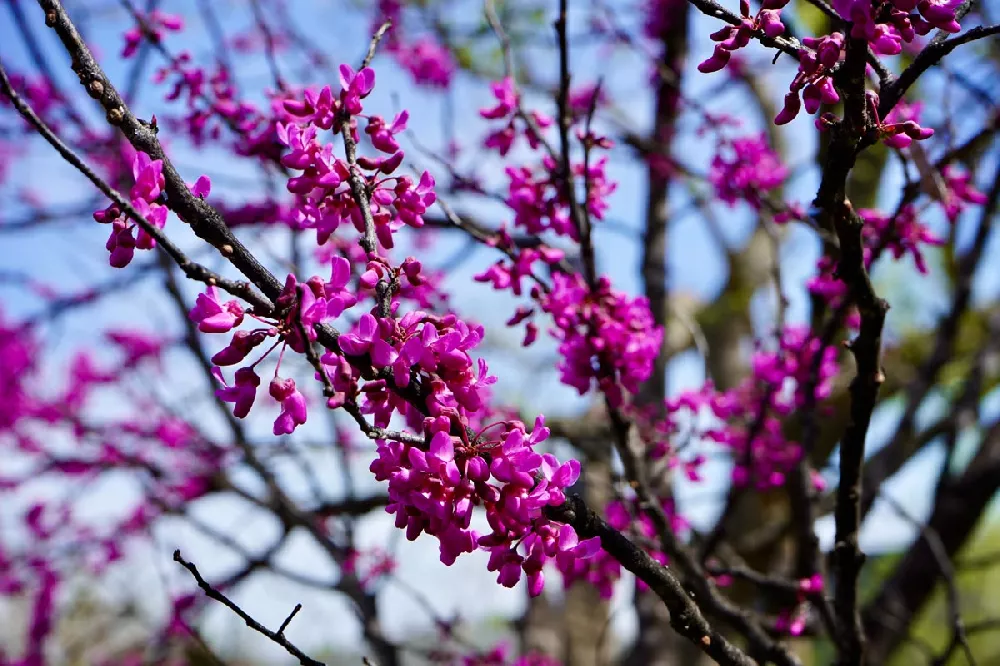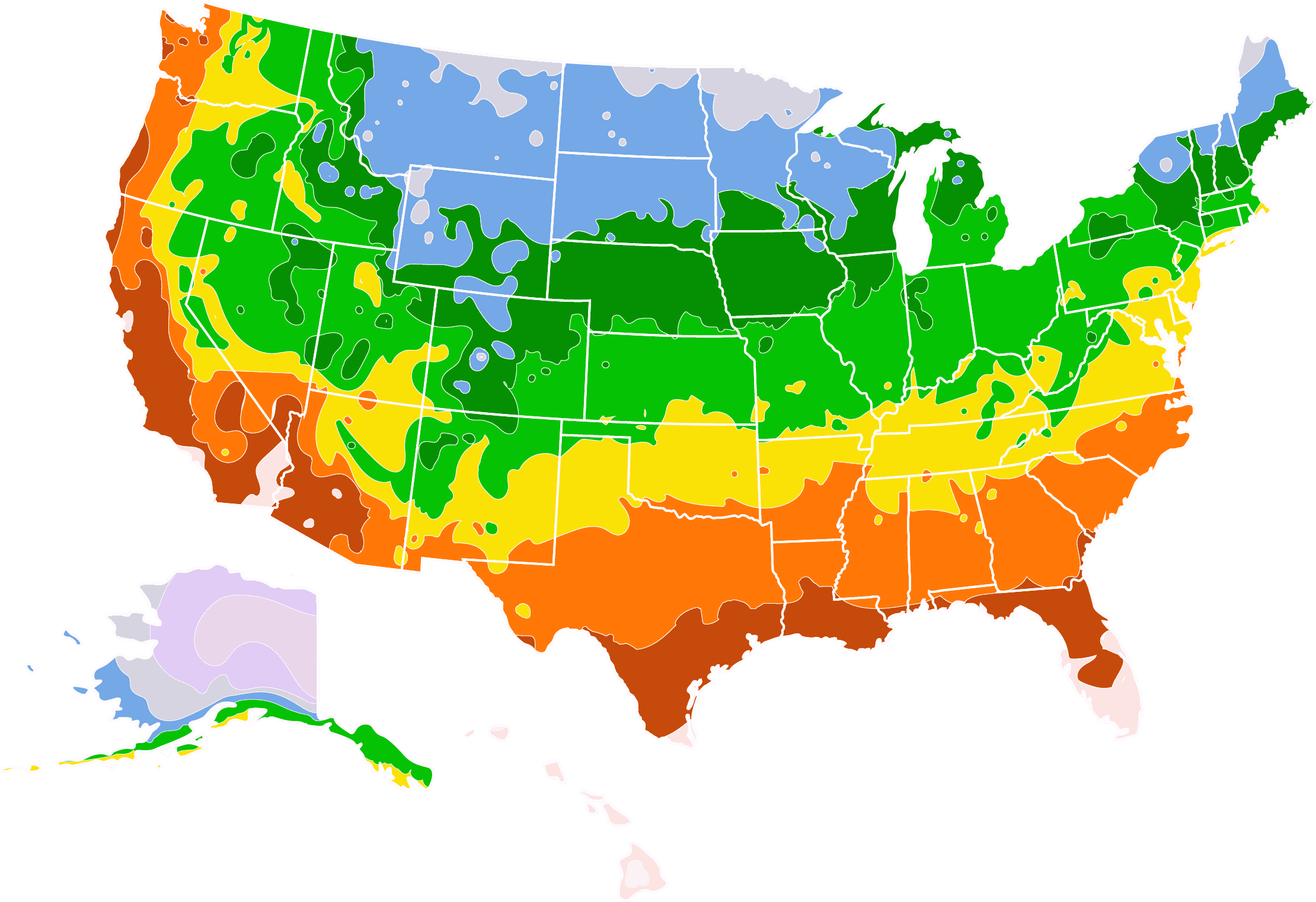Eastern Redbud for Sale - Buying & Growing Guide
- Ships in 1-2 days
- 1-Year Warranty Eligible
- Pots or accessories are not included unless specified in the product options.
Shipping Details:
Once your order is shipped, you’ll receive an email with a tracking number and estimated delivery date. Most orders ship immediately, but some items are seasonal and may only ship in spring or fall. These products are noted on the website.
Eastern redbud, or Cercis canadensis, is a small tree species native to the eastern half of the continental United States. In April, this species shows off its bright purple flowers, which arrive before the leaves and cover the entirety of the canopy. When the leaves do arrive, they are impressive as well, with a distinct heart-shaped form. One characteristic of this tree that makes it so valuable is its moderate size. Eastern redbud grows to about 25 feet tall and 15 feet wide, making it ideal for smaller-scale planting schemes.
- Vibrant purple flowers cover the branches in the early spring.
- Large heart-shaped, deciduous leaves arrive after the flowers.
- Moderate size makes this an excellent tree for residential landscapes.
Plant Care
Sunlight

Minimum of four hours of partial sunlight per day. Full sunlight works too.
Watering
Water mature plants about once per week during the growing season.
Fertilizing

Fertilization needs are relatively low. One feeding of all-purpose fertilizer in spring should be enough.
Eastern Redbud
Eastern redbud, or Cercis canadensis, is a small tree species native to the eastern half of the continental United States. In April, this species shows off its bright purple flowers, which arrive before the leaves and cover the entirety of the canopy. When the leaves do arrive, they are impressive as well, with a distinct heart-shaped form. One characteristic of this tree that makes it so valuable is its moderate size. Eastern redbud grows to about 25 feet tall and 15 feet wide, making it ideal for smaller-scale planting schemes.
Vibrant purple flowers cover the branches in the early spring.
Large heart-shaped, deciduous leaves arrive after the flowers.
Moderate size makes this an excellent tree for residential landscapes.
Planting and Care
Planting instructions
Begin by finding an area with full or partial sun exposure. Make sure that the soil has excellent drainage in that location as well. Then, dig a hole that is as deep as the root ball and twice as wide.
Place your tree in the hole so that the root flare remains exposed, then backfill the hole. After filling the hole, add a layer of organic mulch to maintain soil moisture. Provide water about twice per week during the first few months.
Watering and nutrients
During establishment, water your eastern redbud tree about twice per week. Once the tree has exhibited a few months of continuous healthy growth, you can reduce waterings to once per week. Increase your watering frequency during times of drought.
Overall, eastern redbud trees do not need a lot of fertilization. You can use a balanced fertilizer formula or an organic soil amendment, such as compost, once per year during the spring. Most fertilizers that are labeled for shrubs and small trees will work well.
Pruning
Wait until this plant has finished flowering before you prune it. When you prune, remove any branches that are dead, broken, or crossing. For crossing branches, it is best to remove the branch that is growing more toward the center of the tree rather than removing branches that contribute to a healthy spreading canopy.
Generally, eastern redbud has an appealing natural form. That means you won’t need to spend much time shaping this tree. All you’ll need to focus on is removing any branches that are unhealthy or damaged.
Pests, diseases, and animals
Pests and diseases can be common problems for eastern redbud trees. Leaf anthracnose is one of the most common diseases that will afflict this plant. Canker, which causes lesions to appear on the stems and twigs of the eastern redbud plant, is also a common issue. In extreme cases, these diseases can cause this tree to die.
Pests may also arrive on your eastern redbud. The most common type that you’ll find is borer insects. Leaffolders and weevils also cause problems for this species.
Achieving maximum results
Before planting the eastern redbud, know that it can be a short-lived tree. While it’s possible for this species to live for 50 years or more, it’s also common for it to last just two decades, even with appropriate care.
The timing of your pruning is also of great importance. The greatest ornamental feature of this plant is its early spring flowers, which grow from old wood. If you prune before those buds bloom, you risk losing a large portion of this tree’s flowers.
FAQs
How fast does eastern redbud grow?
The growth rate of an eastern redbud can be moderate in some cases and quite fast in others. If you give your eastern redbud the ideal location and care, it may grow two feet in a single year. Fast growth is most prevalent during the early stages of this tree's life, after which it will begin to slow down as it reaches its mature height of 20 to 30 feet.
Why do eastern redbud trees tend to die young?
The lifespan of an eastern redbud can vary greatly. In an ideal situation, this tree may live to be 50 years or older. At the other end of the spectrum, you'll find eastern redbuds that struggle to make it beyond 20 years. A shorter lifespan may be the result of poor care. However, it is also somewhat typical for an eastern redbud to succumb to disease before it can reach old age.
Will eastern redbud flowers attract birds?
The flowers of an eastern redbud tree are not only appealing to our eyes, but they are also attractive to a few bird species. Rose-breasted grosbeaks and hummingbirds are among the most common birds that enjoy feeding on this plant's nectar. Additionally, the eastern redbud is likely to attract insects such as butterflies and honeybees. Other animals, including deer, will also use this tree as a food source.
Compare Similar Products
Customer Reviews
 Redbud tree
Redbud treeThe tree arrived in excellent shape and is doing very well. I am very pleased with this product. Would order from this company again.
 Redbud tree
Redbud treeDaughter loved tree said it arrived in good condition
 Beautiful tree
Beautiful treeThe tree arrived in beautiful condition, can't wait for it to start blooming!
 Eastern Redbuds
Eastern RedbudsWe love the blooms as they grow naturally in this area. The rootball on one of the trees was damaged - a lot of the soil was knocked off the roots in transit but we are providing extra tender loving care to keep it alive. I generally don't plant trees at this time as the weather is pretty warm but am hopeful that all will work out.
 Tree was very nice
Tree was very niceTree arrived healthy & ready to plant.
 Can't wait for it to Bloom
Can't wait for it to BloomI love it. The tree arrived green and alive . Now I'm waiting for it to Bloom. Thank You. Mrs. Baldwin Chester
 Dogwood Tree
Dogwood TreeIt was very small & skinny for a tree that old! Sure hope it grows fast & big!
You can't add more Product Name - Product size to the cart.
OK







